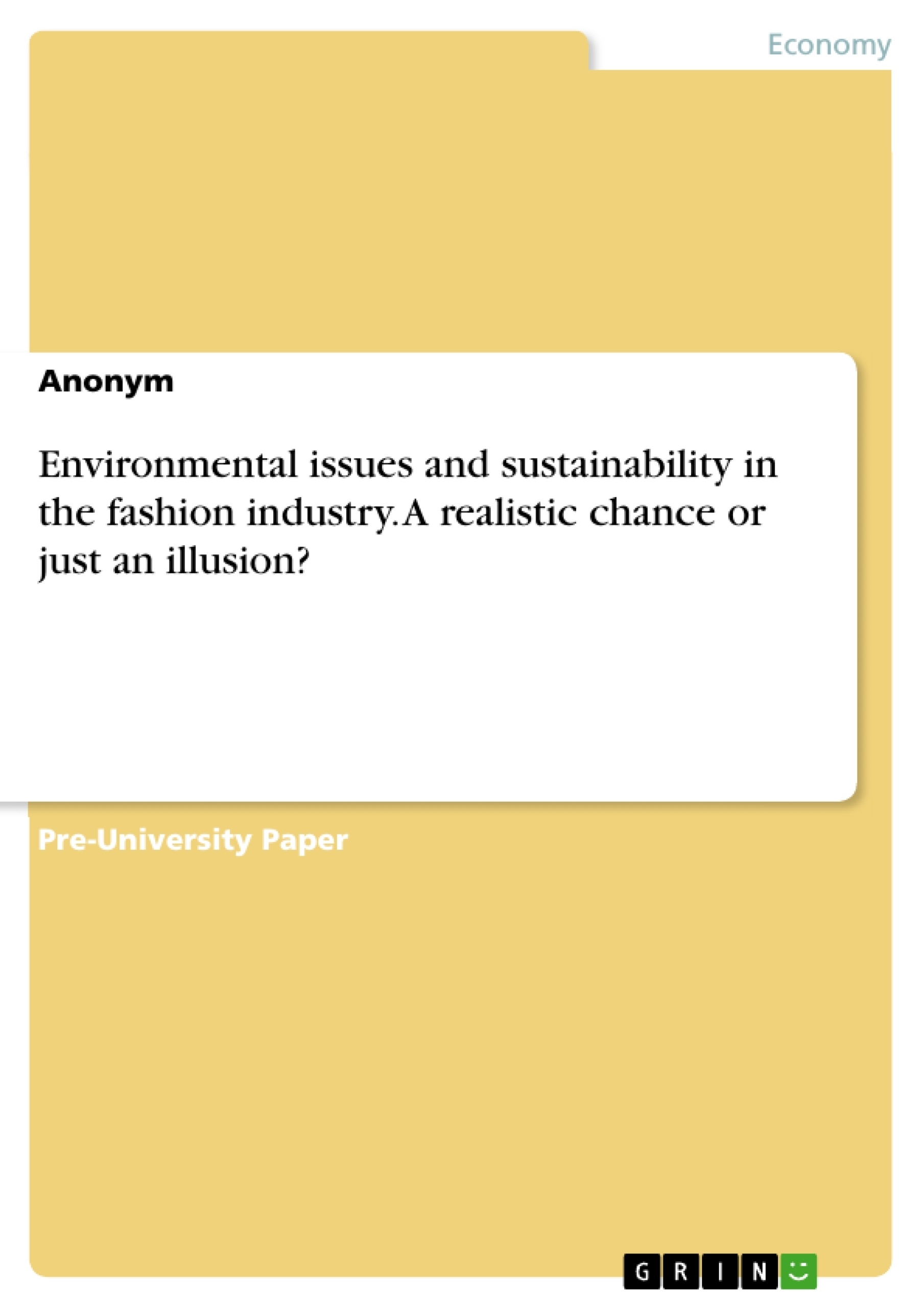This short text is about social and enviromental issuse of the fashion industry and the question if labels could improve the industry.
According to the European Research Service about 5 % of the household expenditure in the EU is spent on clothing and footwear. The average German buys 60 items of clothing a year of which they do not wear 18% more than twice at all. 20 % of the items are not worn more often than four times a year.
However, the wish of wearing fair fashion has constantly increased in the last few years3 because consumers have become aware of the problems of fast fashion. These changes have triggered a different approach with some consumers. They look for clothes that are produced sustainably.
Inhaltsverzeichnis (Table of Contents)
- Introduction
- What does fashion mean to our society?
- Sustainability in the fashion industry
- Environmental issues of the garment industry
- Raw material
- Production process
- Overproduction
- Social issues of garment industry
- Environmental issues of the garment industry
Zielsetzung und Themenschwerpunkte (Objectives and Key Themes)
This text explores the impact of the fashion industry on both the environment and society, focusing particularly on the rise of fast fashion. It investigates the environmental consequences of raw material production, the manufacturing process, and overproduction. Additionally, the text examines the social issues related to the industry, such as low wages, poor working conditions, and the exploitation of workers in developing countries.
- The environmental impact of fast fashion
- The social consequences of fast fashion
- The concept of sustainability in the fashion industry
- The role of consumers in promoting sustainable fashion practices
- The importance of ethical and responsible sourcing in the fashion industry
Zusammenfassung der Kapitel (Chapter Summaries)
- Introduction: This chapter introduces the topic of sustainable consumption and the significant impact of the fashion industry on the environment, highlighting the need for a shift towards more responsible practices.
- What does fashion mean to our society?: This chapter explores the phenomenon of fast fashion and its impact on consumers, managers, and investors. It examines how fashion brands have capitalized on globalization and low labor costs to create responsive supply chains and frequent collections.
- Sustainability in the fashion industry: This chapter delves into the concept of sustainability, defining its three pillars - social, economic, and environmental. It specifically focuses on the environmental and social issues within the garment industry.
- Environmental issues of the garment industry: This section explores the environmental problems associated with the fashion industry, including the high use of chemicals, water, and energy in the production of raw materials, the manufacturing process, and the disposal of unsold goods.
- Social issues of garment industry: This section examines the social consequences of the fashion industry, particularly highlighting the low wages, poor working conditions, and exploitation of workers in countries like Bangladesh. It analyzes the role of the garment industry in the economy of Bangladesh and the impact of factory accidents on workers' rights and safety.
Schlüsselwörter (Keywords)
The text centers around the keywords of fast fashion, sustainability, environmental impact, social impact, ethical sourcing, garment industry, production processes, raw materials, consumerism, labor rights, and worker exploitation.
- Quote paper
- Anonym (Author), 2020, Environmental issues and sustainability in the fashion industry. A realistic chance or just an illusion?, Munich, GRIN Verlag, https://www.grin.com/document/918688



